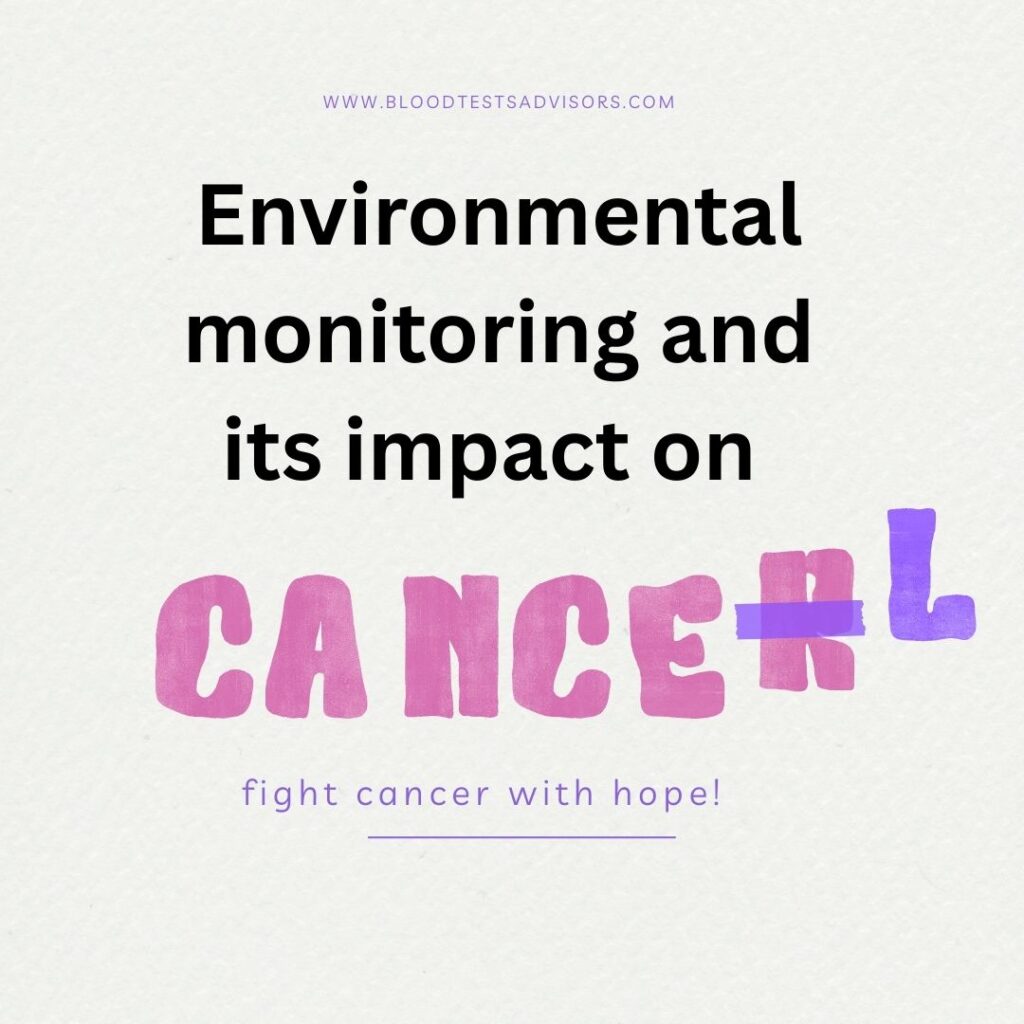How Environmental Monitoring Influences Blood Tests for Cancer Treatment: Exploring the Relationship Between Pollution, Toxicity, and Cancer Detection
Environmental monitoring and its impact on cancer is becoming an increasingly important area of study in modern medicine. Pollution and environmental toxins do not just contribute to cancer development—they also influence the outcomes of blood tests used in its detection and treatment. In this article, we delve into Environmental Monitoring and its impact on cancer, examining how pollution alters diagnostic markers and affects treatment strategies.
The Connection Between Pollution and Cancer Development
Urban environments expose populations to a wide range of harmful pollutants—heavy metals, pesticides, industrial waste, and airborne chemicals. These toxins are known to damage DNA, disrupt cellular processes, and trigger mutations, all of which can lead to cancer. Environmental monitoring and its impact on cancer provide researchers with valuable data about these pollutants, helping establish links between environmental exposures and increased cancer risks.
By mapping pollution hotspots and correlating them with regional cancer rates, environmental monitoring and its impact on cancer become clear. It helps health professionals better understand the environmental triggers behind various cancers, offering a path toward prevention, early detection, and informed treatment decisions.
Environmental Toxicity and Its Role in Cancer Progression
The environment doesn’t only affect cancer detection—it also plays a major role in how patients respond to treatments. Toxic air, contaminated water, and chemical exposure can suppress immune function, reduce treatment efficacy, and even cause additional mutations.
Here again, environmental monitoring and its impact on cancer are critical. By identifying the specific pollutants a patient has been exposed to, oncologists can adjust treatment plans accordingly. For instance, if a patient’s environment includes known chemotherapy-resistant toxins, doctors might opt for alternative therapies.
For instance, certain pollutants may mimic or interfere with the biomarkers that are commonly used in cancer blood tests, leading to false positives or false negatives. Environmental monitoring can help determine the specific pollutants that may be influencing the blood test results, allowing healthcare providers to interpret the data more accurately.

Personalized Medicine Through Environmental Monitoring
A core component of personalized medicine is tailoring treatments to each patient’s unique profile, which now includes environmental exposure. Environmental monitoring and its impact on cancer allow for such customization.
By integrating environmental data into patient records, doctors can better predict treatment outcomes and side effects. Moreover, environmental monitoringand its impact on cancer help identify new biomarkers influenced by the environment—providing more accurate and individualized diagnostic tools.
Innovations Driven by Environmental Monitoring and Its Impact on Cancer
The insights gained from environmental monitoringand its impact on cancer are driving innovation in both diagnostics and therapeutics. Researchers are developing new assays that account for environmental interference, improving the reliability of blood-based cancer tests. These innovations are helping detect cancer at earlier stages and with greater precision.
Moreover, healthcare policies are beginning to incorporate environmental monitoringand its impact on cancer by advocating for routine environmental assessments in high-risk areas. This ensures communities vulnerable to pollution receive proactive cancer screening and support
The Future of Cancer Care: A Holistic Approach
Looking ahead, environmental monitoringand its impact on cancer will become an integral part of global cancer prevention and care strategies. As environmental data collection improves with technology, the ability to connect pollution trends with cancer patterns will also improve.
To truly advance cancer care, healthcare systems must embrace environmental monitoring and its impact on cancer not just as a research tool but as a fundamental element of clinical practice. From policy makers to physicians, everyone must recognize that environmental conditions are as critical as genetics or lifestyle in determining cancer risk.
Read further at:
https://scispace.com/papers/biological-monitoring-for-environmental-health-risk-2gjzyga3of
https://scispace.com/papers/chemical-contaminants-in-blood-and-their-implications-in-2mjs9q3k2m
https://scispace.com/papers/blood-and-air-pollution-state-of-knowledge-and-research-4icc970xx5
https://scispace.com/papers/urban-environmental-monitoring-and-health-risk-assessment-4rnuyy2ikt



